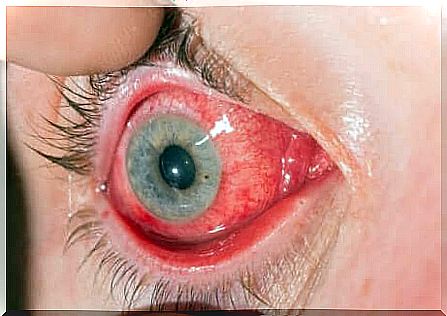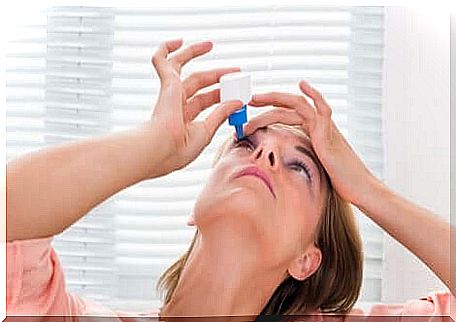Allergic Conjunctivitis: Symptoms, Causes And Treatment

Allergic conjunctivitis is a chronic inflammation of the conjunctiva caused by exposure to certain environmental factors. When it is accompanied by rhinitis (inflammation of the nasal mucous membranes) it is referred to as rhino-conjunctivitis.
It is estimated that around 25% of the population suffers from this disorder in some form, with an increase in cases in the pollen season. Let’s see what the symptoms, causes and treatment are.
Types of allergic conjunctivitis

The conjunctiva is the membrane that lines the inside of the eyelids and the white part of the eye. It contains numerous immune cells that release chemicals when stimulated by environmental agents (pollen, smoke, mites, etc.).
These substances inflame the conjunctiva temporarily or for a more or less prolonged period. Conjunctivitis can occur in isolation or can be accompanied by other disorders such as rhinitis, asthmatic bronchitis or eczema.
There are different types of allergic conjunctivitis based on the agent and course. According to a study published in Community Eye Health Journal , the following types are distinguished:
- Seasonal allergic. It is the most common form and affects all ages. It is triggered by pollen, so it occurs in spring and summer to disappear in the other seasons.
- Allergic perennial. It is present all year round. The most common allergens are dust, smoke, mites, animal hair or feathers.
- Spring keratoconjunctivitis. Typical of hot countries, it affects male children between the ages of 8 and 12 the most. It can be made worse by exposure to sunlight, wind, and dust.
- Atopic keratoconjunctivitis. Associated with atopic dermatitis, it causes itching, swelling and redness. It affects the surface of the eyes and eyelids, sometimes even the cornea.
What are the symptoms?
Allergic conjunctivitis usually affects both eyes. As indicated by the Allergy and Immunology Foundation of Australasia the symptoms are:
- Itchy eyes.
- Red eyes.
- Burning.
- Tearing.
- Intolerance to bright light.
- Blurred vision in some cases.
Symptoms are evaluated for diagnosis, followed by an ophthalmic examination with the slit lamp. To trace the triggering agent, tests such as conjunctival smear, prick test or conjunctival provocation test can be performed.
Causes of allergic conjunctivitis
Allergic conjunctivitis is an excessive reaction of the immune system to an environmental agent. When the eyes are exposed to the stimulus, the body captures the agent and triggers a series of reactions; these give rise to the inflammatory response.
Additional agents can be viruses, stress, spicy foods, light, and other factors that often intensify symptoms. These elements are harmless if the conjunctiva is not already inflamed.
Treatment

In the case of allergic conjunctivitis, there are two measures to be taken: reduce exposure to the trigger factor and treat the symptoms. The scientific journal Community Eye Health Journal is recommended to change the pillows and blankets, or anything that may contain the allergen.
Care should be taken not to rub the eyes and rather apply cold compresses to soothe the itch. Your doctor may recommend medications such as antihistamines, non-steroidal anti-inflammatories, topical corticosteroids, or artificial tears.
All of these measures are helpful in calming symptoms, but the best treatment, as always, is prevention. For this purpose, the agent must first be identified by means of an allergy examination. In any case, it will be good to keep the house clean, avoid keeping rugs, soft toys and pets.









